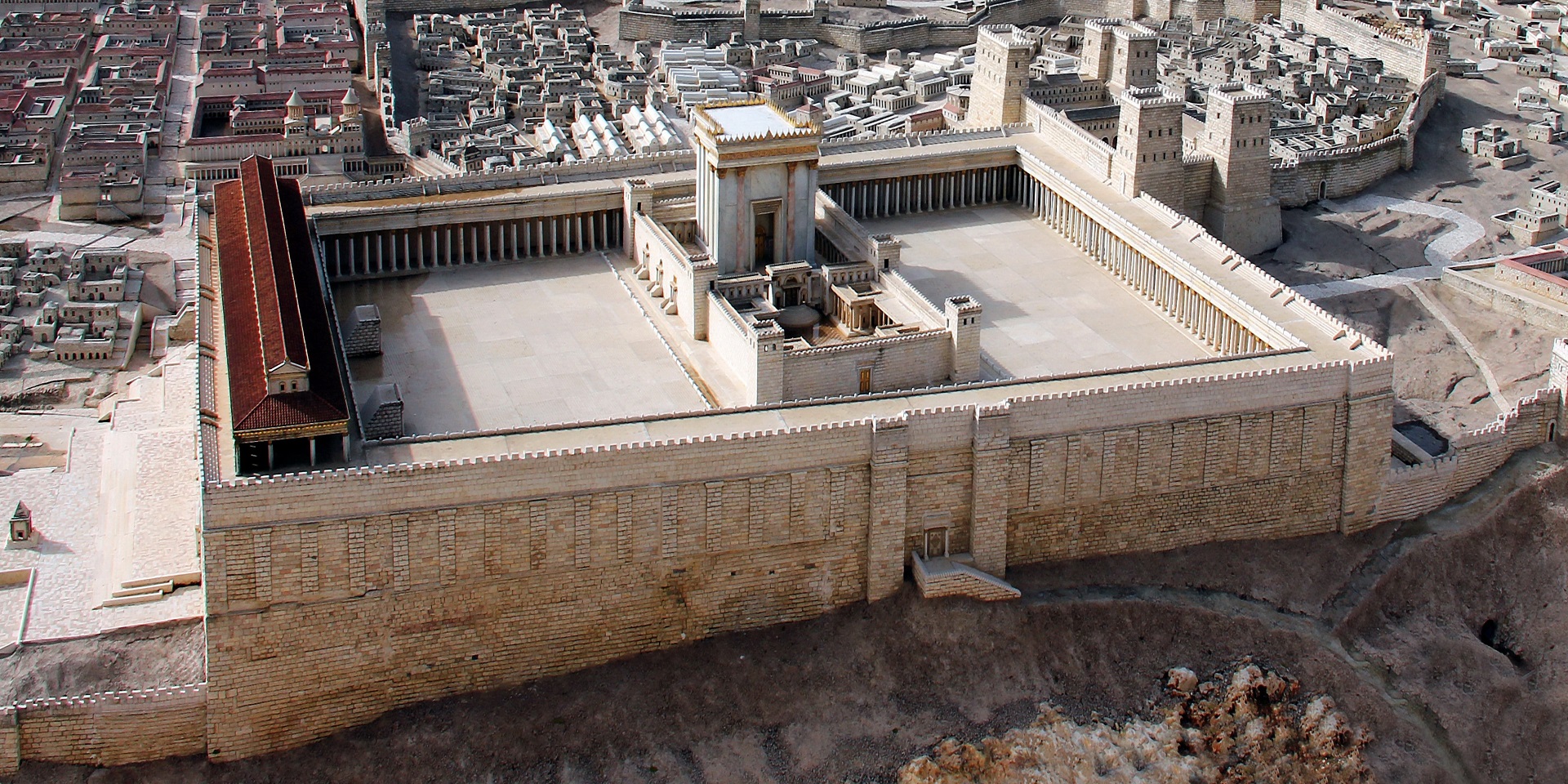“Jerusalem crucified the Lord, Rome beheaded and crucified his chief apostles and plunged the whole Roman church into a baptism of blood. Rome became, for good and for evil, the Jerusalem of Christendom, and the Vatican hill the Golgotha of the West. The cross was substituted for the sword as the symbol of conquest and power”.[1]
The Arch of Titus on the Via Sacra in Rome shows, ironically, that the glory of Rome, as a pole of power in Christianity, could not have been born without the tragedy of the destruction of Jerusalem.
Mutual contempt and hatred
The history of Roman-Jewish relations began in the 7th century BC, when Rome imposed its total leadership in the Near East. The Romans were never able to understand the Jewish way of thinking or their lifestyle, and as a result dialogue and attempts at coexistence failed again and again. Over the years, hatred, contempt, and mutual resentment accumulated and was exacerbated between the Jews and the Roman power.
The Jews’ aspirations and nationalist movements were enlivened by messianic expectations more than in the case of other peoples. The religious stake was practically the main ingredient of the involvement in nationalist movements. Often, the Roman armies, made up of the nations neighbouring the Jews, provoked the population especially through gestures that struck their religious cord.
As a sign of contempt for their Jewish neighbours, they publicly tore scrolls of the Torah[2] and burned them. The sympathy of the locals was increasingly directed towards the radicals of the nationalist movements, the Zealots and Sicarii,[3] who, in addition to social, economic, and political motivations, promoted the religious cause. Fanatics ignored the power of the Roman giant and waited for the miraculous intervention of Divinity for their cause.
The beginning of the end
The greedy Roman procurator of Judea, Gessius Florus (64-66), appropriated almost 600 kilograms of gold from the sacred treasury of the Temple in Jerusalem. Florus’ sacrilege triggered a military revolt in the country. To his attempts to restore the Roman leadership through massacres, the nationalist forces reacted with even more violence, exterminating the Roman armies they were defeating. In the year 65, radical Jewish forces controlled Jerusalem.
Two years later, Vespasian, one of Emperor Nero’s trusted generals, was sent to restore peace to the region, the Roman way. Vespasian, together with his son Titus and a large army,[4] began the march towards Jerusalem. By the middle of the year 68, Palestine was brought under the control of the Roman forces.
The populations of the conquered cities were mostly exterminated, and the few Jews left alive were sold as slaves. Jerusalem was practically isolated from the rest of the country. The death of Emperor Nero in June 68 postponed the attack on Jerusalem. From the death of Nero until the end of the year 69, Galba, then Otho, Vitellius, and, finally, Vespasian, who entrusted the assault and conquest of Jerusalem to Titus, succeeded in leading the empire.
The tragedy, step by step
The time offered by the Roman political context was not used wisely by the Jewish forces, who controlled Jerusalem with its four rings of fortifications: the lower city, the upper city, the Antonia fortress, and the Temple. Basically, from the year 65 until 70, the parties of the Zealots, the Sicarii, and the Moderates fought each other for the control of Jerusalem.
In this blind conflict, they killed a significant number of their soldiers and burned a large amount of grain, which could have provided them with food for several years under siege. The party of Moderates was destroyed. Simon and John, the leaders of the Zealots and the Sicarii, joined forces only when the battering rams of the Romans began to batter the gates of Jerusalem.
The Roman generals were aware of the differences between the Jews and the scarcity of their food reserves. In the spring of the year 70, they let the Jewish pilgrims enter the citadel for Passover, but they did not let them out again—so that the resources would be consumed more quickly. In a short time, hunger began to torment the inhabitants of the city, who ended up committing atrocities that upset the collective conscience.[5]
The destruction of the Temple
After the Antonia fortress was razed to the ground, the assault on the Temple was prepared. In August of the year 70, the Roman forces entered the Temple premises. While the Roman soldiers were preoccupied with extinguishing a fire in the outer courtyard, the Zealots came from the inner courtyard and attacked them. In the fight that followed, a Roman soldier threw fire into the Temple and thus the fire that destroyed the building broke out. According to Jewish tradition, on the same day, but hundreds of years before, in 586 BC, the Temple of Solomon was destroyed by Nebuchadnezzar II.
Dio Cassius reports about the reactions of the Jews who saw their Temple on fire: “They wanted to die, some threw themselves into the swords of the Romans, others stabbed each other, others took their own lives, and others threw themselves into the flames. And it seemed to everyone that they are not defeated, but that this is how they know victory, salvation, and happiness, perishing next to the Sanctuary”.[6]
Flavius Josephus, an eyewitness, describes the tragedy: “Around the altar lay dead bodies, heaped one upon another; down the steps of the sanctuary flowed a stream of blood, and the bodies of those killed above went sliding to the bottom.”
In the following days, the Roman soldiers demolished all of Jerusalem’s fortifications, leaving only a part of the western wall and three towers as a reminder of the strength of the fortification they destroyed. Jewish survivors, identified as rebels, were executed alongside the elderly and invalids. Children and those able to work were sold as slaves.
Christianity in a new world
Knowing Jesus’s warning (Matthew 24:15-21), Christians left Jerusalem in the period between the sieges and fled to the city of Pella, in Decapolis. After the events of the year 70, Jerusalem was never again a pole of influence in Christianity.
Christianity had been perceived in its first decades of existence as a religious current within Judaism. Henceforth, the pagan world recognised Christianity as an independent group. The Jews were displeased that their Christianised brothers left Jerusalem and did not fight alongside them. In the year 90, during the Jamnia Synod, a curse against Christians was introduced into the religious service of the synagogue, alongside the “18 blessings”, to exclude them from worshipping in the synagogue.
In the year 65, groups of Sicarii conquered and massacred the Romans from the garrison of Masada. The soldiers were mostly from Caesarea, where also a large Jewish community lived. The inhabitants of Caesarea responded by killing 20,000 Jews and expelling those left alive from the city. The situation spread to other cities as well. Following such incidents, Christians wanted to detach themselves from the Jews even more, because the anti-Jewish feeling was getting stronger in the empire.
As a direct consequence of this desire to distance themselves from the Jews, Christians, especially those in Rome, adopted a day of worship different from the seventh-day Sabbath inherited from the Jewish apostles. In time, Rome would become the new Jerusalem. Just as Jerusalem did not recognise its Lord and crucified Him, Rome martyred many Christians in the Colosseum built from the spoils taken from the Temple treasury and later, in the Middle Ages, persecuted Christians who kept the faith they had received from the first apostles.



















